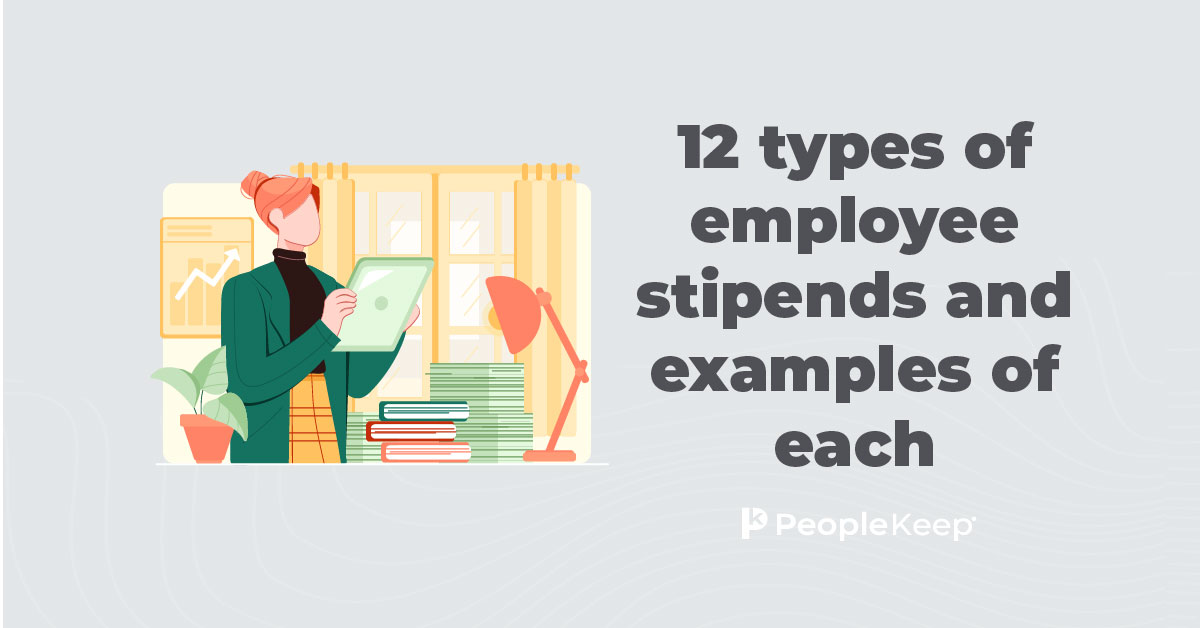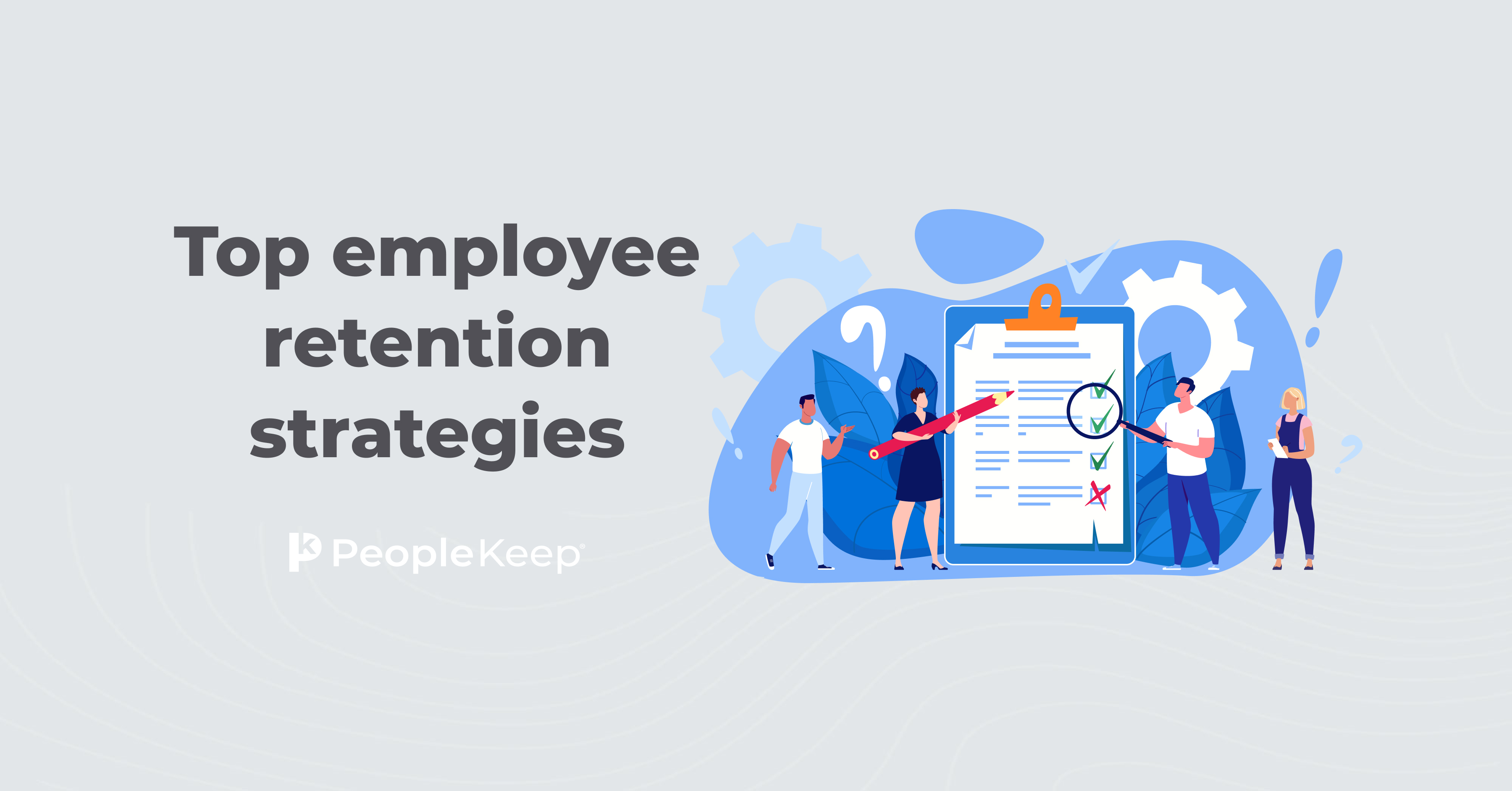Seven steps to take when offboarding employees
By Elizabeth Walker on October 18, 2024 at 8:00 AM
Most companies spend considerable time and effort creating a robust employee onboarding program for new hires. But it’s just as important to develop a formal offboarding process to ensure employees leave your organization on a positive note.
Employee turnover is always challenging. But, a successful offboarding program can help you transition workers smoothly, provide valuable employee feedback, and boost your company culture.
In this blog post, you’ll learn:
- The importance of having an offboarding program.
- Seven essential steps to offboarding your employees.
- Best practices for communicating an employee's departure to ensure a positive experience for your entire workforce.
What is employee offboarding?
Employee offboarding, or exit management, involves managing the employee experience when staff members leave a company. Offboarding can be for voluntary resignation, layoff, retirement, or termination.
The employee’s direct manager and your human resources (HR) team typically handle offboarding. This ensures a smooth transition for the company, the employee, and their team.
Some essential tasks that occur during offboarding include:
- Capturing critical institutional knowledge for current projects
- Conducting an exit interview
- Completing relevant HR paperwork
- Communicating the employee’s departure to their teammates
Ideally, you should part with the employee on good terms. To stay organized, you can design an offboarding checklist. This checklist can help your HR team and other managers navigate the employee’s offboarding process.
The system you create will vary based on your company policy, organization size, the employee’s position, and why they’re leaving. Still, many of the key steps on your offboarding checklist will be the same regardless of these factors.
Why is having an employee offboarding program important?
Designing a positive offboarding process has many advantages. Not only does it help keep a worker’s exit as friendly as possible, but it’s also a vital part of the entire employee lifecycle.
Here are five benefits of having an organized offboarding program:
- It reinforces your company’s brand. Giving offboarding employees a positive last experience makes them more likely to recommend you as an employer of choice.
- It entices boomerang workers. Roughly a quarter of external hires in 2023 were boomerang workers1. An effective offboarding process helps these employees feel comfortable returning to your company.
- There are fewer potential security risks. When someone leaves your organization, you must close security gaps. You can do this by collecting data, documents, and equipment. Ensuring you follow specific steps to collect these items can reduce the mishandling of sensitive company information.
- You gain honest feedback. The employee offboarding process is a great time to gain constructive feedback. You can use this information to improve your company and help you fill open positions.
- It reduces legal risks. Properly terminating employee contracts can avoid costly wrongful termination lawsuits. No one should leave your company feeling you breached agreements or promises.
Seven steps to take when offboarding employees
Now that we know why an organized offboarding program is essential, we’ll review seven key steps you should take when an employee exits your company.
1. Understand the reason for the exit
In most cases, the employee’s manager will know the reason for the exit. So, work directly with the manager to determine why the individual is leaving to customize their offboarding.
For example, a retiring employee may have a more straightforward offboarding process than someone you’ve laid off. Similarly, the information you can gather from a worker resigning to be a full-time parent will differ from someone leaving due to company culture.
In all cases, involve the employee’s manager so the person feels supported before their exit.
2. Communicate the employee’s departure
Telling your staff about an employee’s departure is sometimes uncomfortable. But it’s best to speak openly and honestly about why a coworker is leaving—whether their departure is voluntary or involuntary.
Here are some tips on how to effectively share the news of an employee’s departure:
- Communicate the information immediately once you finalize the exit to prevent gossip.
- The longer you wait to share the news, the more likely your other current employees will fill in the gaps with inaccurate information.
- Share the employee’s last day and other relevant information with their team.
- Depending on the employee’s role, you may need to notify outside parties.
- For example, if the offboarding employee is client-facing, inform their clients of the transition process.
- Let your remaining staff know they can come to you with any questions or concerns to ensure they feel supported.
- Speak about the offboarding employee with fairness and gratitude for their service at your company.
“Conduct a farewell ceremony to show the value of the employee’s work,” said Chris Langley, HR specialist at Heritage Windows. “Instead of sending the person off with a blind farewell lunch, use this time to credit their accomplishments and let their colleagues show some appreciation. This will make the employee feel honored and also boost overall team spirit.”2
A successful departure protects you from retaliation and legal issues. It can also help you cultivate a long-lasting and positive relationship with the employee as a potential customer or business contact.
3. Complete the necessary paperwork and administrative tasks
Like the hiring process, an employee’s exit requires lots of paperwork. Your HR team can help the offboarding employee navigate any administrative tasks. Still, work with your HR and legal teams beforehand to ensure they have all the necessary information before offboarding.
Be sure you include the following paperwork and administrative tasks in your employee offboarding process:
- Notify IT of the employee’s last day so they can change equipment and software access.
- Meet with HR to discuss any closure information for employee benefits.
- If applicable, complete all transition documents, such as a formal letter of resignation and non-disclosure agreement.
- Request any applicable company property back from the employee.
- Schedule the employee’s exit interview.
- Alert your payroll department to the final paycheck date
- Process outstanding employee reimbursements for bonuses or paid time off (PTO).
- Review the terms of the employee’s contract with your legal team to ensure all obligations are complete.
- Work with accounting to review the employee’s compensation package for tax purposes.
4. Complete an institutional knowledge transfer
Employees take their skills and knowledge of the job when they leave. If you don’t collect that valuable knowledge, you could leave future employees without the necessary information to do their jobs.
If you can’t find a replacement before the employee leaves, you should start a knowledge transfer when they give notice. You can ask them to create a document detailing helpful information, including any tips their replacement may find useful.
The following are essential items you may want to ask your employee for:
- Their daily work routine, including how they prioritize and manage tasks.
- Access to files and software the employee uses and if any files need ownership transfer.
- A list of internal and external collaborators.
- Any systems the employee uses that their replacement may need training on.
- Their ongoing projects and tasks that they may not finish before leaving.
5. Hold an exit interview
The exit interview is one of the most critical parts of the offboarding procedure. It’s an excellent opportunity to learn what your company is doing well, what needs improvement, and the staff member's overall experience.
This feedback can give you insight into areas you haven’t noticed, like workload, culture, and compensation. By asking the right questions, you can gain valuable insight into your employees' true feelings.
If your employees are uncomfortable speaking with their direct manager, you can opt for a detailed HR questionnaire. This way, you might get more specific and honest answers.
A few sample questions to include in an exit interview process are:
- Did the job live up to your expectations? What were those expectations, and how did they live or not live up to them?
- What was your professional relationship like with your manager and your coworkers?
- What were some employee benefits you wished you had?
- What are some ways we could improve our workplace culture?
- What’s great (and what could be better) about working here?
You should customize your exit survey to include more specific questions about your company. Specific questions can help your company grow so you can attract and retain your workers.
The exit interview is likely the last experience an employee will have at your company. So, it’s essential to prioritize it. Remember, any information you gather is valuable, even if you don’t like what you hear.
6. Revoke employee access
Another essential part of the offboarding experience involves securing data and revoking employee access to business systems. Yet a recent survey found that nearly 47% of employees still have access to company accounts of previous employers3.
Not removing your outgoing employees from all necessary company accounts leaves you open to security breaches. It can even delay transfers from the former employee’s systems to their replacement.
You can maintain access until the employee’s last day. But you can always revoke access to company systems sooner.
The following are systems you should remove an employee’s access from when they leave your company:
|
Internal platforms and files |
Company-owned equipment |
Online and offline company systems |
|
|
|
7. Develop a short-term and long-term plan for coverage
When current employees leave, you may have to pause many of their projects and daily tasks. Sometimes, their teammates must cover their responsibilities. But this can lead to burnout and a stressful work environment—even with a successful knowledge transfer session beforehand.
Below are a few ways you can relieve the burden on your employees:
- Create a temporary work plan to ensure your remaining staff can meet business needs without burnout.
- Evaluate the work your departing employee manages. This can help you reassign prioritized tasks and remove any unnecessary work.
- Be transparent with your employees so they can prepare for the changes and potentially extra workload.
- If you’re not planning to fill the employee’s position, work with the manager of the affected team to redistribute the workload permanently.
By following these tips, you can focus on finding the best person for the role—without overloading your remaining staff.
Conclusion
The onboarding process is important. But offboarding is the last crucial step in any good employer-employee work relationship. A well-rounded offboarding program keeps your company productive while transitioning between workers. It also gives you valuable feedback to improve business operations and enhance the employee experience.
A positive offboarding experience can motivate your employees to advocate for your organization after they leave. So, treat your offboarding program as an effective way of attracting and retaining workers in a competitive labor market.
This article was originally published on November 16, 2022. It was last updated on October 18, 2024.
1. HBR - The promise and risk of boomerang employees
Check out more resources
See these related articles

What are boomerang employees?
Boomerang employees are individuals who return to work for a former employer after some time away. Learn about the benefits of hiring boomerang employees.

12 types of employee stipends and examples of each
Looking to provide additional perks to your employees? This comprehensive guide outlines 12 types of employee stipends and how you can implement them.

Top employee retention strategies
Looking for effective employee retention strategies? This guide provides you with proven tactics to reduce turnover and increase employee satisfaction.



